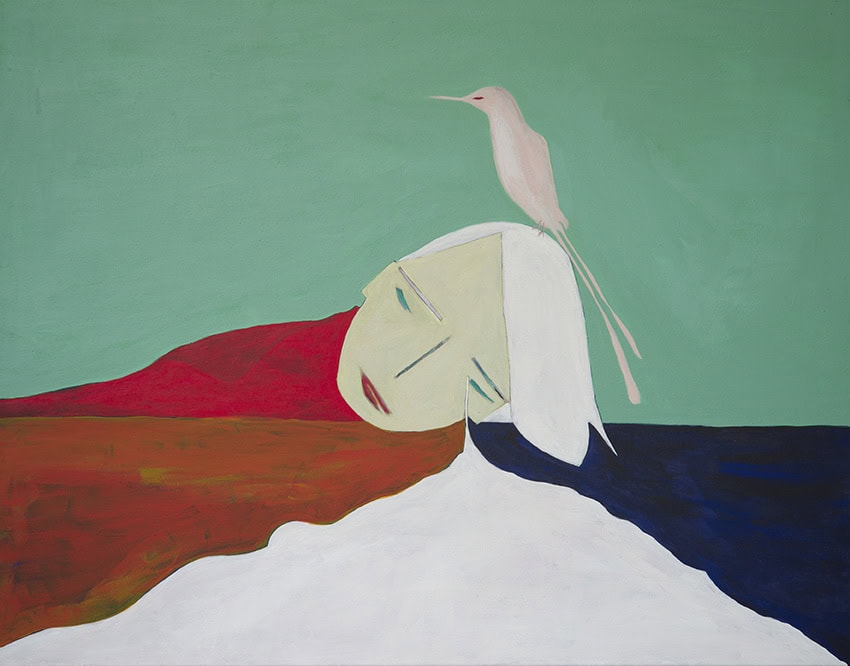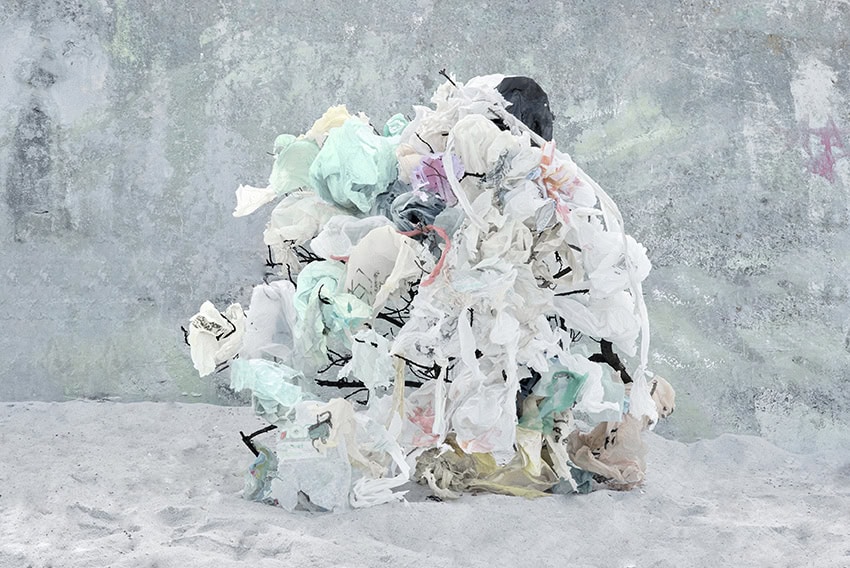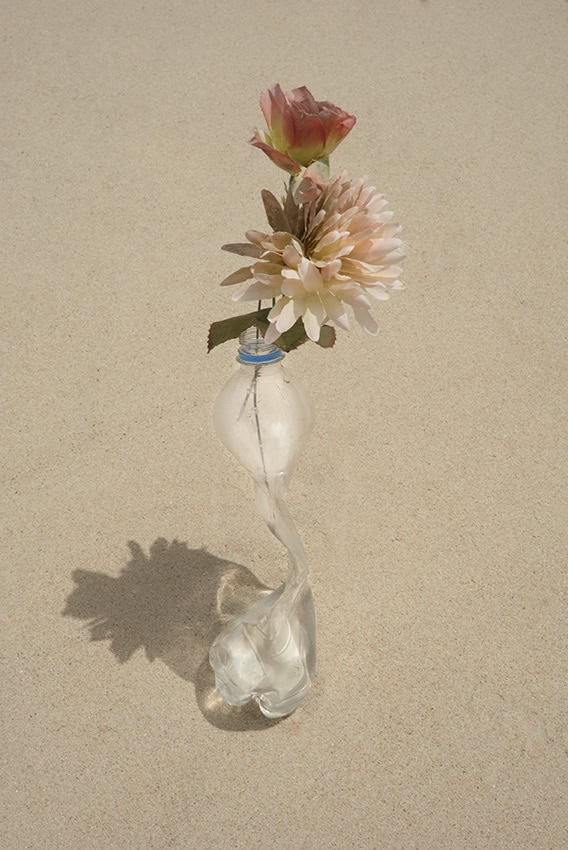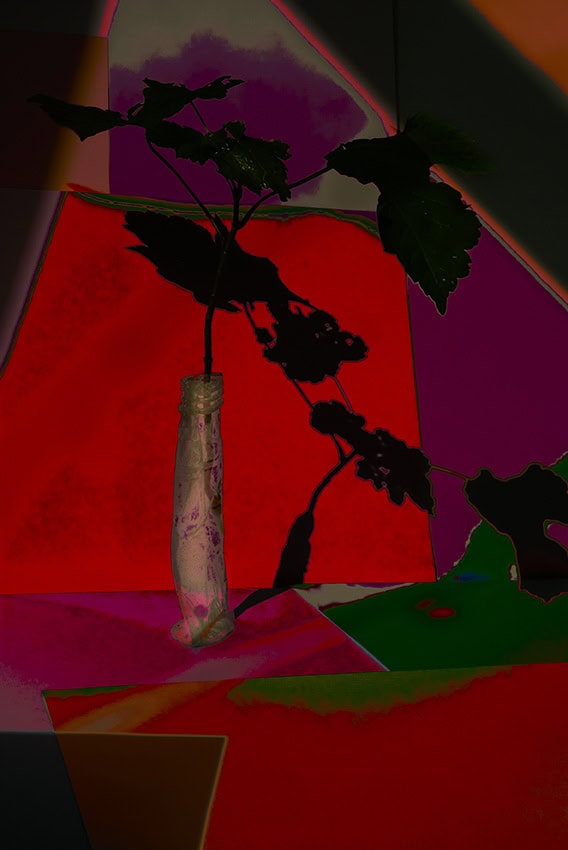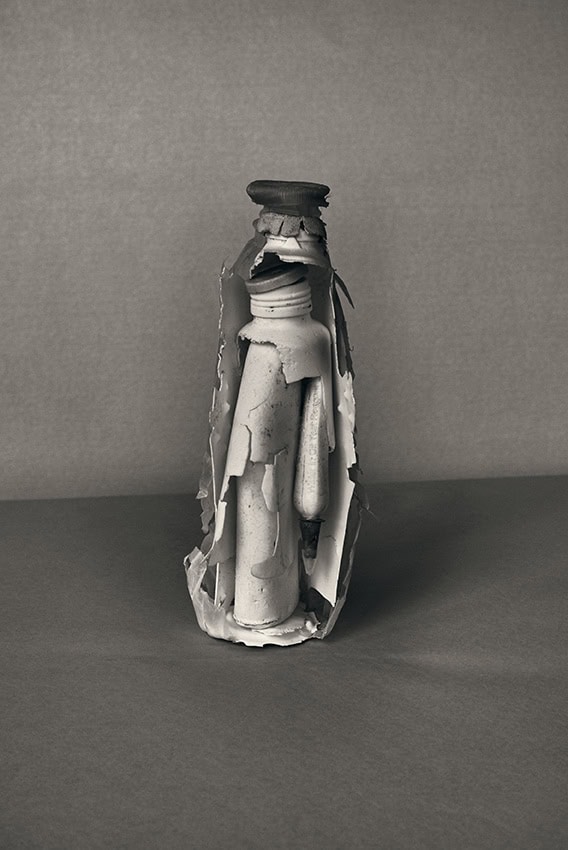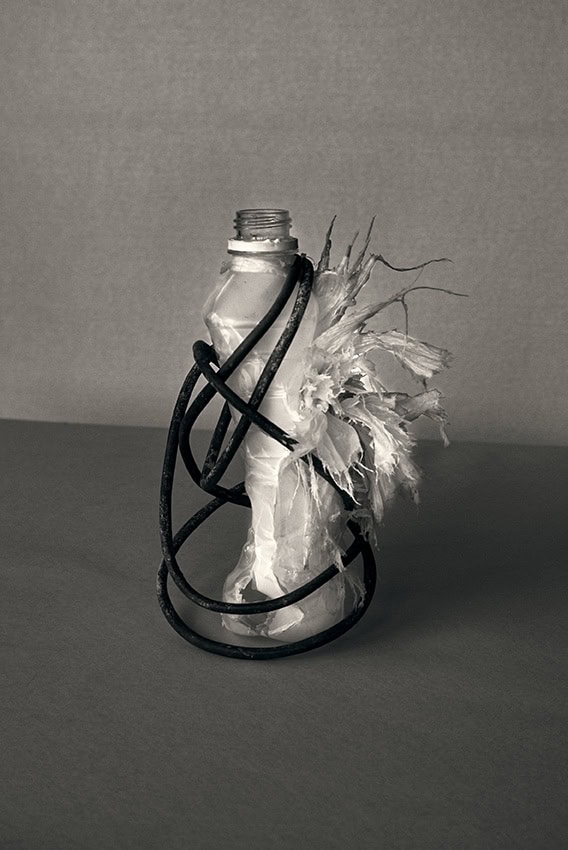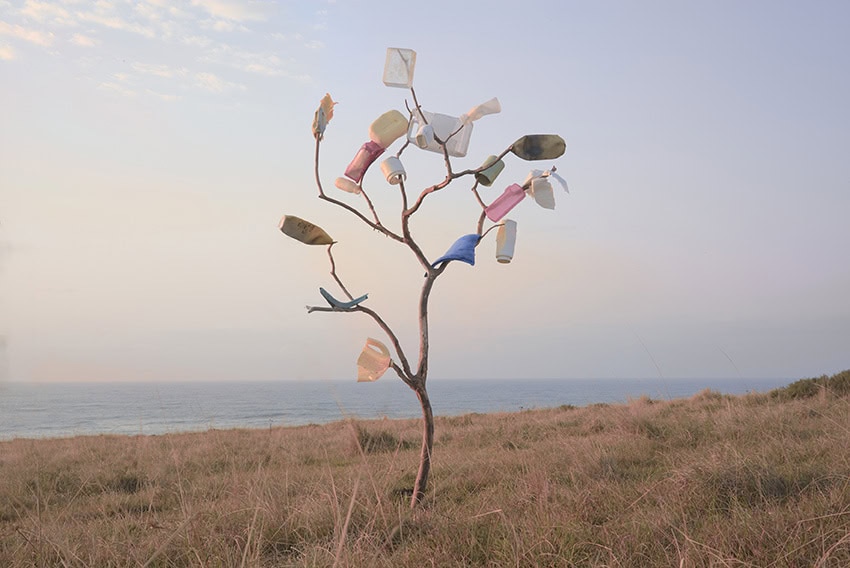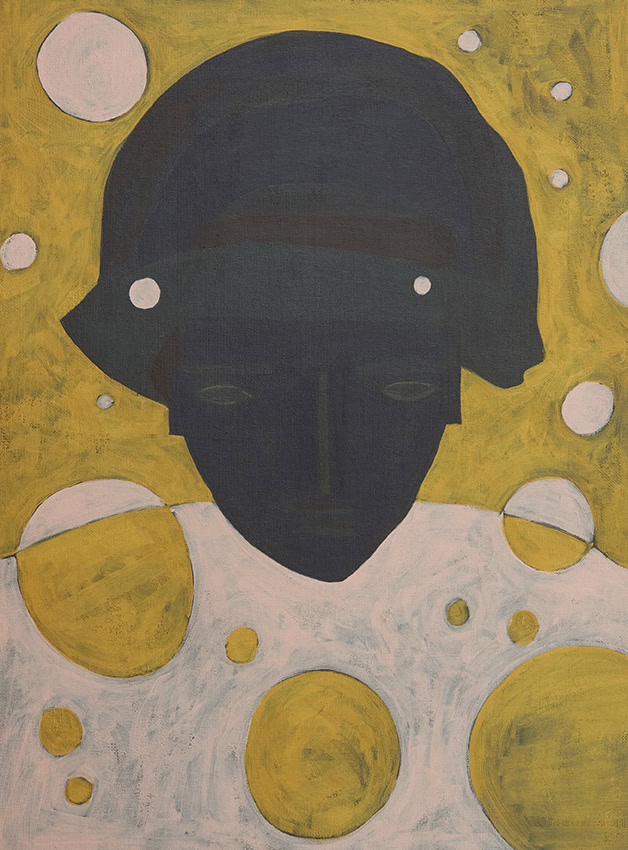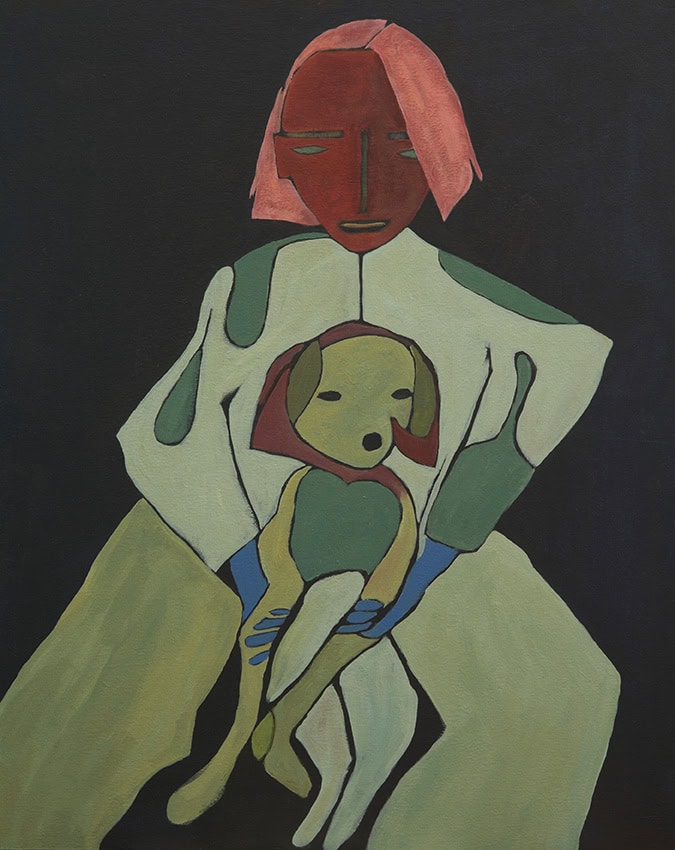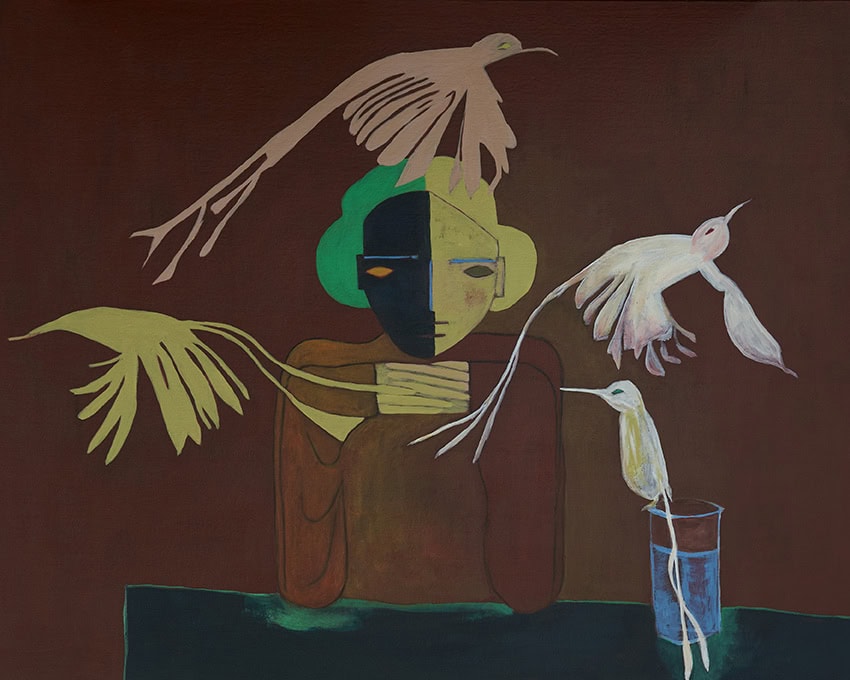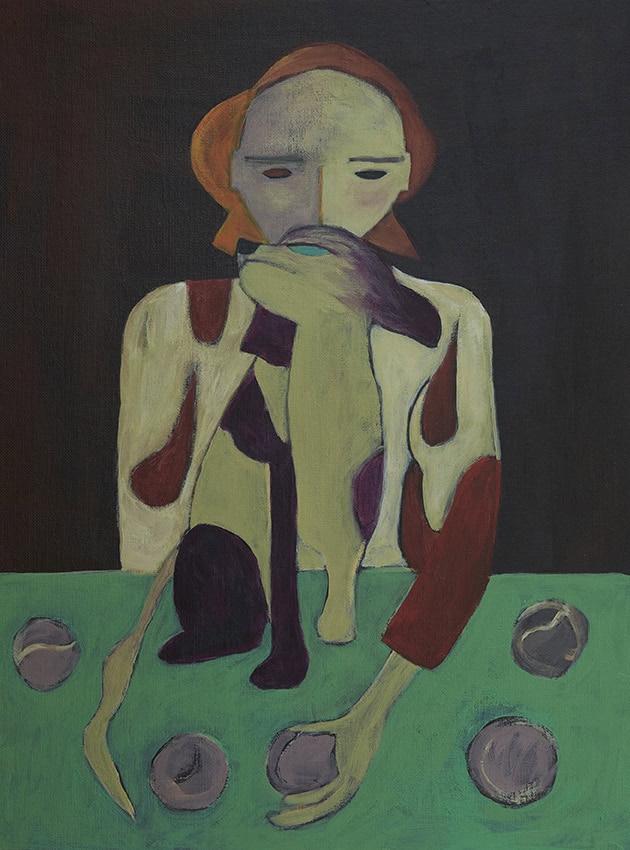In 2016, Thirza Schaap started photographing found plastic sculptures and sharing her pictures on social media. She carved out a daily habit, foraging for plastic while out on morning rambles, then going home and making fanciful, pastel-hued arrangements on a table in her garden, and finally photographing her impromptu sculptures. Her lighthearted constructions contain familiar, everyday objects: bottles and lids, balloons, shoes, forks and spoons, toothbrushes, straws, and, of course, the ubiquitous plastic bag.
Despite their sweet allure, Schaap’s images are also deeply troubling. There has, after all, been a global party, and these pictures are glimpses of its ugly aftermath, shards of the unsustainable volume of refuse from our collective voraciousness. As sites of celebration so often appear the morning after, Schaap’s compositions are full of spent enjoyment, of things now devoid of use, faded, deflated, or broken. These things have been thrown away, but they persist, unable to decompose, resisting deletion. Plastic as memories, are devoid of decomposition.
Ilaria Sponda: Your photographic project Plastic Ocean seems a long-term project on single-used items reminiscent of traditional icons of mortality.
Thirza Schaap: That is right. Starting photographing items found on the beach as a daily routine transformed into a long-term project. The one-minute sculpts which I sometimes find as they’re depicted are made permanent through the photographic act. I find it unique to make art pieces from discarded materials just picked up from the beach. The images provide a clash between worlds, offering minimal and aesthetically pleasing compositions that, on closer inspection, instill a sense of ecological grief, asking questions about consumption, idolatry, and what we value in our lives today. Each composition is at once haunting and seemingly timeless–providing a kind of Vanitas for the 21st century. Skulls, wine glasses, and fruit–traditionally markers of mortality, ephemerality, and wealth–have been traded out for bottles, baskets, and bowls: single-use items which are used and discarded, existing now as empty, destructive vessels. I hope to evoke an emotional response in audiences by creating a contradiction. These works are colourful and beautiful but in a tragic way. Our beaches are covered in plastic confetti and there really is nothing to celebrate.
IS: Who are some of the painters you’re taking as references? How do they combine with photography masters who have worked on Vanitas?
TS: I mainly find my inspiration in nature but in art history too. The Water Lilies series by Monet is definitely a reference for me. The water lilies are my plastic bottles though. I photograph my sculptures often against a black background with the principle of the Dutch light we know from the old Dutch masters. I love the surrealistic drawings of Juul Kraaijer, and the work of Marlene Dumas too.
IS: What’s your preferred canvas or frame size to work with?
TS: When I paint I trace a reflection of a moment, an emotion, I feel almost in a hurry to get it on my canvas. Therefore smaller canvasses work well at the moment. I really want to make a series of large paintings in the future though.
IS: When did you make that switch or expansion from photography to painting?
TS: The paintings reflect my personal life and are in a way all self-portraits, me with animals or people next to me. I recently lost my beloved doggy she was a black and white poodle and my everything. Being on all trips picking up the trash from the beaches together, waiting for me to finish my photographs patiently. When she was diagnosed with cancer I was devastated and started to paint first on jerry cans and plastic oil bottles which I picked up from the shores. I had a strong urge to visualise figures which translated how I felt. I painted for ever since every day.
IS: Where are you based at the moment? Does the environment inspire your work somehow?
TS: I am dividing my time between Cape Town and Amsterdam, the project started in Zeeland The Netherlands and came to grow in Cape Town and the desolated beaches of South Africa. The environment has been my number one inspiration hand in hand with the urge to raise awareness about the single use of plastics which are woven in our lives. I am personally driving to re-use and repair everything, my husband is going every time for a new repair challenge . So jobs are easy but some take quiet some persistence to fix something. We grew up replacing everything that broke but now it is all about repair and second hand. The minute you decide not to buy something new it is already a gain.
